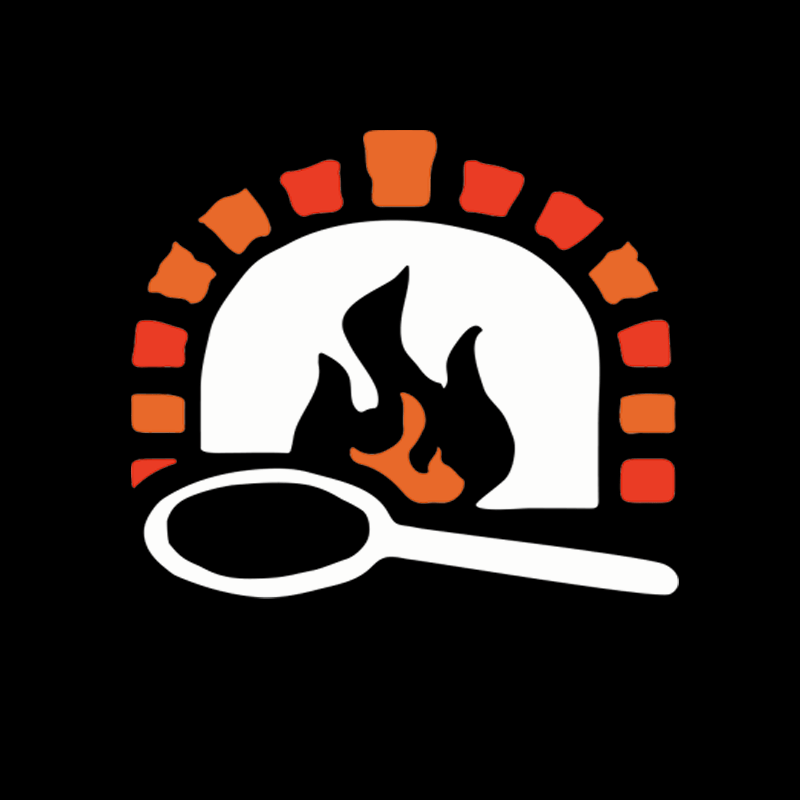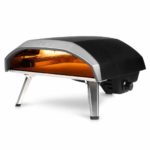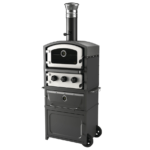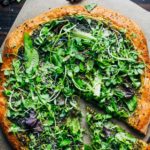Why Does Pizza Give Me Diarrhoea? (Causes And Remedies)
Have you ever experienced diarrhoea after eating a pizza? It is one of the most common digestive complaints and can be caused by several factors in our daily diet. It’s not just greasy foods like pizza that can cause it.
Food allergies, intolerances and sensitivities to gluten are all potential causes of digestive upset and abdominal pain.
In this blog post, we’ll look at the truth behind why you might experience diarrhoea from eating pizza, as well as potential remedies for the prevention or management of these symptoms.
Why Does Pizza Give Me Diarrhoea?
Pizza consumption can be a potential cause of diarrhoea, with various possible causes such as food allergies and intolerances, overeating or eating too quickly, and the high-fat content of some ingredients.
The Potential Causes Of Diarrhoea From Eating Pizza
Dietary triggers can play a role in the development of diarrhoea, especially when they involve eating pizza. Common ingredients present in pizza like cheese, tomato sauce and garlic can trigger digestive upset and symptoms if an individual is sensitive to these components.
In addition, contaminants such as certain types of bacteria or processing defences used for freshness can also be responsible for causing gastrointestinal distress. Even diets high in artificial sweeteners may increase the risk of developing post-meal diarrhoea.
For those affected by food allergies and intolerances, avoiding dairy products (such as traditional pizza cheeses) altogether may help reduce any related digestive issues that arise after consuming pizza.
Additionally, people with celiac disease should opt for speciality gluten-free pizzas when trying to avoid triggering their condition which causes chronic diarrheal conditions linked both directly and indirectly to eating regular doughs containing wheat flour-based simple sugars known as dextrins.
The Role Of Ingredients In Triggering Digestive Upsets
Pizza can commonly cause stomach upset and diarrhoea, however, this is often due to problem ingredients contained within the pizza.
Wheat flour in the crust, dairy found in cheese or toppings, certain vegetables such as mushrooms and onions, processed meats like pepperoni, and sauces high in fat content. These ingredients can all increase digestive discomfort for some individuals.
Wheat flour is a major culprit when it comes to triggering digestive distress.
Wheat gluten has been known to aggravate IBS symptoms including bloating and diarrhoea. Dairy causes problems too.
And those with lactose intolerances should avoid pizzas that contain cheese made from cow’s milk or other dairy products such as cream which can lead to significant abdominal pain following consumption of even smaller amounts of food.
Particular fermentable carbohydrates (FODMAPs) that occur naturally in certain vegetables added on top of pizzas also cause varying degrees of gut irritation for some people so if your diet includes very few cooked veggies it is best avoided altogether.
The Impact Of Overeating Or Eating Too Fast
Eating too much pizza or eating it quickly can impact the digestive system and lead to diarrhoea. Consuming large amounts of food all at once brings a sudden surge of energy and nutrients into the body, which can overwhelm digestion and cause abdominal discomfort.
This is especially true when overeating highly processed, high-fat foods like pizza. Eating more than you should, particularly in rapid succession, can be hard on the stomach and intestines.
In order to avoid these unpleasant effects from overeating pizza (or any other type of food for that matter), it’s important to listen to your body’s signals regarding hunger and fullness levels so you don’t overindulge.
Remedies For Preventing Pizza-Related Diarrhoea
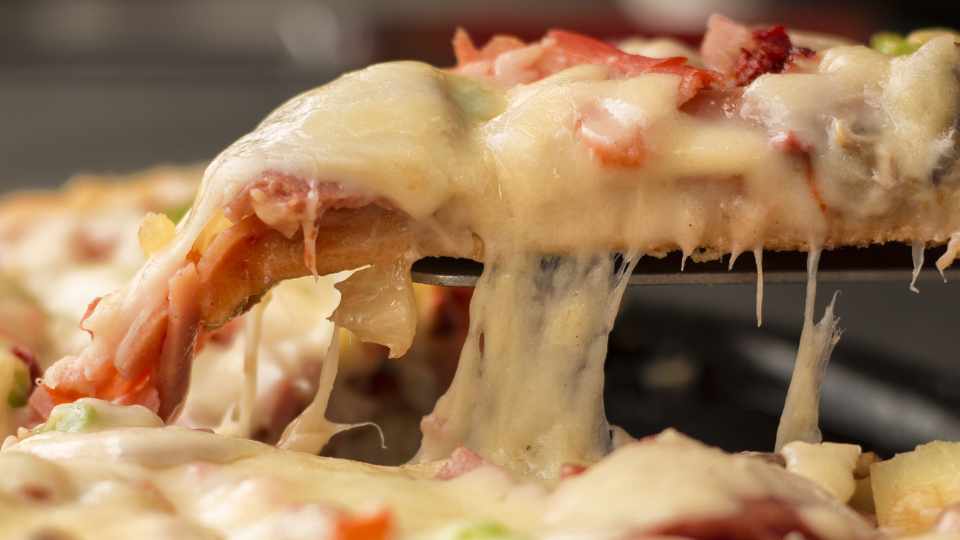
Choosing The Right Toppings And Crust Type
To prevent and manage pizza-related diarrhoea, it is important to choose the right toppings and crust type.
Lean proteins like chicken are a healthier choice compared to high-fat options such as pepperoni or sausage. Avoiding processed or high-fat ingredients can also help reduce the risk of symptoms occurring.
The type of crust used for a pizza can play an important role in preventing adverse digestive effects; whole wheat and gluten-free dough provides more beneficial nutrition than white flour dough.
You should also opt for nutritious toppings that provide vitamins and minerals instead of those containing empty calories; some healthy ideas include mushrooms, bell peppers, onions, spinach, olives, pineapple slices and lean cuts of meat rather than fatty cheeses or meats.
Managing Portion Sizes And Eating Slowly
It is essential to pay attention to portion sizes and eating habits when eating pizza or any other meal that could potentially lead to digestive upset. When consuming pizza, try choosing a smaller size such as individual-sized pizzas or splitting larger ones with others instead of ordering one per person.
It may also help to create your own pies from scratch by choosing leaner meats, low-fat cheese, whole grain dough, and veggie toppings like freshly cut peppers instead of heavy sauces or greasy cheeses.
Additionally, it’s important for those suffering from uncomfortable symptoms associated with overeating pizza that they remember not only to chew their food slowly but are mindful not to eat overlarge servings at once.
Avoiding Pizza With Processed Or High-fat Ingredients
This is also a key factor. Processed foods, such as those used in pizza preparation, contain empty calories which can lead to obesity and other long-term health issues.
The saturated fats found in processed foods may also increase the inflammatory response in the body leading to abdominal discomfort and digestive upset. High-fat foods, especially when over-consumed, cause an acidic reaction that can worsen symptoms of gastroenteritis or “stomach flu” associated with diarrhoea.
Ingesting too much fat from food sources like pepperoni or sausage toppings can put extra strain on your intestines causing cramping and loose stools. Eating high-fat meals can also have a negative impact on gut bacteria creating an imbalance between healthy populations of beneficial microbes which play a role in digestion and more destructive ones that can result in accelerated unsteady digestion resulting eventually in unwanted episodes of diarrhoea.
The best way to prevent this type of gastrointestinal distress is by avoiding processed ingredients altogether. Because there are many delicious (and healthier) alternatives!
Whole grain crusts with organic tomato sauce topped off with organic vegetables are just one example of a low-fat alternative that still offers plenty of flavour while eliminating digestive risks.
Additionally, reducing portion sizes and eating slowly helps reduce stress on the stomach enabling better absorption so our bodies get the maximum nutritional benefit without any accompanying digestive disturbances.
Drinking Plenty Of Water
Replenishing lost fluids and electrolytes is essential when dealing with the symptoms of pizza-related diarrhoea. By hydrating sufficiently, it is possible to help restore the balance of water and salts required by the body to stay healthy.
This can play a key role in improving digestion, and prevent or reduce further bouts of diarrhoea illness. Water should be drunk regularly throughout the day even if there are no immediate signs of dehydration such as thirst.
Drinking 1 – 2 litres for adults every day helps ensure efficient hydration. It serves a double purpose since drinking enough water aids in digestion, while also helping significantly reduce symptoms associated with diarrhoea.
Increasing Fibre Intake
is an important step in preventing and managing diarrhoea related to pizza consumption. Eating more dietary fibre can help improve digestion and regulate your bowel movements, as well as reduce stomach discomfort and inflammation associated with digestive upset.
Soluble dietary fibre (SDF) in particular has been scientifically proven to be clinically useful in treating diarrhoea during tube or enteral nutrition in elderly patients.
Foods rich in SDF that are beneficial for those suffering from pizza-related diarrhoea include oatmeal, quinoa, applesauce, chia seeds and black beans. Dietary fibre supplements such as Psyllium husk powder have also been proven effective at reducing intestinal inflammation and improving gut flora balance.
Taking Probiotics
Probiotics are live microbial organisms that can help balance the bacteria in our gut, improve digestion and alleviate symptoms of bacterial overgrowth such as diarrhoea.
Probiotic supplements or probiotic-rich foods like yoghurt, kombucha and sauerkraut are especially beneficial for those who experience recurring pizza-related diarrhoea as they can repopulate beneficial intestinal flora to fight off harmful microorganisms.
They may also reduce inflammation and boost immunity to prevent related digestive issues. When it comes to managing a bout of pizza-related diarrhoea after eating too much pizza, for instance, probiotics can be taken to speed up recovery time by up to one day faster than without taking them.
Probiotics not only act on existing bacteria but may also help the body break down certain components from food more effectively so there is less risk of digestive upset.
Avoiding Trigger Foods
Foods that can trigger digestive issues like diarrhoea, such as caffeine, high-fat foods and spicy ingredients, are often found in pizza toppings. Cheese in particular is a common culprit of gastrointestinal issues due to its lactose content.
People with gluten sensitivities or food intolerances may experience digestive upset after eating pizza crust made from wheat flour. Even if avoiding trigger foods when ordering takeout these precautions may not be enough – proper food preparation and handling methods must be followed to prevent any risk of contamination from bacteria like Staphylococcus aureus which could lead to food poisoning and related diarrhoea symptoms.
When consuming pizza it is important for people who have existing digestion problems or dietary restrictions to choose their toppings carefully by opting for healthy vegetables over processed meats that might cause an increase in bloating and gas production as well as cheese substitutes for individuals who cannot digest dairy products.
Furthermore, it is also crucial for people to eat slowly so that stomach acid does not overwhelm the sensitivity of an already delicate GI tract leading to cramps or sudden onset of diarrhoea caused by identified or unidentified causes due to overconsumption or undigested ingredients.
Over-the-Counter Medications
Over-the-counter medications can help to alleviate symptoms caused by pizza-related diarrhoea, especially when recommended and taken according to the instructions provided on the package label.
Common active ingredients used in over-the-counter treatments include bismuth subsalicylate (pepto Bismol) which helps to relieve nausea and prevent bacteria from adhering to the lining of your intestine; loperamide hydrochloride (imodium) which slows down gut contractions resulting in a decrease in stool frequency; and pectin/psyllium husk derivatives (Metamucil), commonly used as a bulk-forming laxative.
While these medications are convenient, it is important for anyone using them for relief of their gastrointestinal distress to read the label information carefully as some have potentially unsafe side effects if taken inappropriately or overdosed upon.
Rest And Relaxation
As much as dietary and hydration changes can help manage pizza-related diarrhoea, rest and relaxation are just as important. Stress has been linked to both chronic indigestion problems such as Irritable Bowel Syndrome (IBS) and gastroenteritis which may lead to symptoms of diarrhoea.
Reducing stress by getting enough sleep, yoga, breathing exercises or even mindful activities like walking in nature all have positive effects on digestion. Additionally, the body needs time for healing from acute cases of gastroenteritis so having good quality rest is beneficial for recovery.
It’s also important to ensure that any remedies taken during this time follow recommended guidelines given by a professional medical doctor; excessive use of over-the-counter medications could mask underlying causes without treating them effectively due to their quick action.
The BRAT diet which consists of bananas, rice, applesauce and toast has traditionally been recommended as a recovery option due to its low fibre rate, being easy to digest but still providing essential nutrition while allowing the digestive system time off with minimal effort required.
Conclusion
In conclusion, pizza has the potential to cause diarrhoea as well as other forms of digestive upset depending on the ingredients and eating habits. To prevent having an episode of pizza-related diarrhoea it’s important to opt for healthier options when purchasing takeout pizzas – avoiding processed ingredients like sausage or pepperoni which are high in preservatives and trans fats.
Taking smaller portions could also help reduce nausea symptoms associated with overeating. Remembering to stay hydrated by drinking enough water throughout the day could lessen dehydration effects caused by typical stomach upsets from a significant amount of sodium intake from foods like pizzas we consume during mealtime daily.
